New York’s rental market presents a complex landscape defined by sky-high prices and an ever-evolving set of trends and regulations. From the towering costs of Manhattan to the more budget-friendly options in outer boroughs, renters face a myriad of choices and challenges. As preferences shift towards flexible leases and sustainable living, understanding tenant rights becomes essential. How can one navigate this intricate market and secure an ideal living space?
Understanding Manhattan’s High Rental Prices
Although various factors contribute to the overall cost of living in Manhattan, the borough’s high rental prices can largely be attributed to its limited housing supply and exceptionally high demand. The island’s geographical constraints limit expansion, keeping housing availability tight. Additionally, Manhattan’s status as a global financial hub attracts a continuous influx of professionals. This demand is further fueled by the allure of cultural attractions, prestigious institutions, and vibrant lifestyle offerings. Furthermore, strict zoning laws and lengthy approval processes hinder new developments, exacerbating the scarcity. Wealthy individuals investing in luxury properties also drive up market prices. Consequently, the competition for available units intensifies, pushing rents even higher. These dynamics create a challenging rental market, reflecting the complex interplay of supply and demand. Moreover, the state’s commitment to enhancing public services and infrastructure can indirectly influence rental prices by improving the overall living environment.
Exploring Affordable Options in the Outer Boroughs
In New York City’s outer boroughs, hidden gem neighborhoods offer promising alternatives for renters seeking affordability without sacrificing quality of life. These areas often boast excellent public transit accessibility, making commuting to Manhattan convenient and cost-effective. Additionally, residents benefit from budget-friendly amenities that enhance daily living while keeping expenses manageable. Furthermore, initiatives to increase green spaces contribute to a more enjoyable urban environment, promoting community engagement and outdoor activities.
Hidden Gem Neighborhoods
Nestled within the outer boroughs of New York City are several hidden gem neighborhoods offering affordable rental options for those willing to venture beyond Manhattan’s borders. Areas such as Astoria in Queens and Bay Ridge in Brooklyn provide not only cost-effective housing but also a vibrant community atmosphere. Astoria is renowned for its diverse culinary scene and cultural festivals, making it a lively yet budget-friendly choice. Meanwhile, Bay Ridge boasts picturesque views of the Verrazano-Narrows Bridge and quaint tree-lined streets. In the Bronx, the neighborhood of Kingsbridge offers affordable rents and a sense of community. These neighborhoods combine rich cultural experiences with historical charm, creating appealing alternatives for renters who desire both affordability and a unique urban living experience.
Public Transit Accessibility
While exploring affordable housing options in New York City’s outer boroughs, one cannot overlook the importance of public transit accessibility. Efficient transportation networks are essential for residents seeking to balance cost with convenience. The outer boroughs—Brooklyn, Queens, the Bronx, and Staten Island—offer diverse neighborhoods where rental prices are often more reasonable than Manhattan’s. However, the suitability of these areas heavily depends on their connectivity to public transit. Proximity to subway stations or reliable bus routes can greatly impact daily commute times and overall lifestyle. Neighborhoods like Astoria in Queens and Crown Heights in Brooklyn are attractive because of their accessibility to multiple subway lines. Evaluating transit options guarantees residents can enjoy affordable living without sacrificing the ease of reaching work, school, or leisure activities.
Budget-Friendly Amenities
When exploring New York City’s outer boroughs, the availability of budget-friendly amenities becomes a crucial factor for those seeking affordable living. Neighborhoods like Astoria, Bay Ridge, and Jackson Heights offer a range of economical options without sacrificing quality of life. Residents often find cost-effective grocery stores, local eateries, and community centers that provide diverse cultural experiences. Access to public parks, libraries, and recreational facilities enhances the appeal, offering free or low-cost activities for families and individuals alike. Transportation options, although varied, often include affordable connections to Manhattan, further increasing the attractiveness of these areas. As living costs continue to rise in the city, these outer borough neighborhoods present viable alternatives for renters prioritizing affordability alongside essential amenities.
Key Trends Shaping the Market
Several notable trends are currently influencing New York’s rental market, reflecting broader economic and social dynamics. One key trend is the increasing demand for flexible lease agreements, driven by a more transient workforce and the rise of remote work. Renters are seeking shorter leases, often opting for month-to-month arrangements. Additionally, there is a growing preference for properties that offer a blend of residential and co-working spaces, catering to those who work from home. Another trend is the emphasis on sustainability, with tenants showing interest in energy-efficient buildings and eco-friendly amenities. Finally, suburban areas are experiencing a surge in popularity as individuals seek more space and lower costs, marking a shift away from traditional urban-centric renting patterns. The rising interest in affordable housing options reflects the ongoing challenges faced by many New Yorkers in securing stable living conditions amid fluctuating market dynamics.
Navigating New Rental Regulations
Maneuvering New York’s rental landscape requires a thorough understanding of recent changes in rent control policies and lease agreements. Renters and landlords alike must stay informed to guarantee compliance with these updated regulations, which aim to protect tenant rights while balancing market dynamics. Successfully managing these changes can markedly impact rental experiences and investment outcomes. Additionally, understanding squatters rights is essential for landlords to secure their properties and avoid potential legal disputes.
Understanding Rent Control Policies
Although rent control policies have long been a fixture in New York’s rental landscape, understanding the intricacies of these regulations remains essential for both tenants and landlords. Rent control limits the amount landlords can increase rent annually, aiming to keep housing affordable. Properties subject to these laws are typically older buildings, often constructed before 1947. Meanwhile, rent stabilization applies to buildings with six or more units, built between 1947 and 1974, or those that have received certain tax benefits. These policies protect tenants from sharp rent hikes, providing stability in an unpredictable market. However, landlords face challenges in maintaining profitability and property upkeep. Maneuvering through these regulations requires staying informed on legal changes and ensuring compliance to avoid potential disputes.
Complying With Lease Changes
As tenants and landlords grapple with the complexities of rent control and stabilization, adapting to lease changes becomes a pressing concern in New York’s dynamic rental market. Steering through recent regulations requires both parties to be well-informed and proactive. Landlords must guarantee compliance with updated lease terms, which may include capped rent increases and renewed tenant rights. Meanwhile, tenants should understand their obligations and protections under revised agreements. Staying updated on legal statutes is essential, as non-compliance can lead to disputes or penalties. Engaging with legal counsel or housing advocacy groups can provide valuable guidance. Both parties benefit from open communication, ensuring a smoother shift amid evolving policies. Ultimately, informed cooperation aids in maintaining harmonious rental relationships amidst regulatory changes.
Insider Tips for Finding Your Ideal Apartment
For those seeking an ideal apartment in New York’s competitive rental market, a strategic approach can make all the difference. Prioritizing key factors such as budget, location, and amenities is essential. Prospective renters should start by defining their must-haves and flexible preferences. Exploring neighborhoods during different times of day provides insight into local dynamics and safety. Utilizing online platforms can streamline the search process, offering filters to narrow choices efficiently. Timing is important; being ready to move quickly with necessary documentation, such as proof of income and identification, can secure a desired unit. Additionally, expanding the search to include newly listed or no-fee apartments can yield hidden gems. Persistence and adaptability are fundamental in maneuvering this fast-paced market. Furthermore, understanding New York’s public resources can aid in finding housing assistance programs that may alleviate some financial burdens.
The Role of Real Estate Agents in the Rental Process
Real estate agents play an essential role in New York’s rental process by acting as intermediaries between landlords and prospective tenants. They provide vital assistance in maneuvering the competitive market, offering clients access to listings that may not be readily available to the general public. Agents possess in-depth knowledge of various neighborhoods, price trends, and property types, helping renters align their preferences with realistic options. Additionally, they facilitate property viewings, ensuring potential tenants have firsthand experience before committing. By handling administrative tasks such as background checks, lease agreement preparation, and documentation, agents streamline the rental process. Their expertise and negotiation skills often prove invaluable in securing favorable terms for tenants while maintaining a balanced relationship with landlords.
How to Negotiate Rent and Lease Terms
Maneuvering New York’s rental landscape often involves more than just finding the right property, as tenants frequently face the challenge of negotiating rent and lease terms. Prospective renters should begin by researching comparable properties in the area to guarantee they understand the market rate and can make informed offers. Demonstrating financial stability and a positive rental history can strengthen their negotiating position. Tenants might also negotiate for concessions such as reduced rent, waived fees, or additional amenities. Timing plays a vital role; landlords might be more flexible during off-peak seasons or if a unit has been vacant for a while. Clear communication and professional demeanor are essential, as building a rapport with landlords or agents can lead to more favorable terms.
Frequently Asked Questions
What Are the Average Utility Costs for Renters in New York City?
Renters in New York City generally face average utility costs ranging from $120 to $200 per month. This includes essential services such as electricity, heating, cooling, water, and garbage collection, depending on the size of the apartment.
Is It Possible to Rent an Apartment Without a Credit Check in NYC?
In New York City, renting an apartment without a credit check is challenging but possible. Some landlords accept larger security deposits or personal references as alternatives. Certain private landlords or subletting arrangements may also offer more flexibility.
How Do Pet Policies Typically Affect Rental Options in New York?
Pet policies greatly influence rental options in New York. Landlords may restrict certain breeds, size, or types of pets, affecting availability and cost. Tenants might face higher deposits or rent, limiting their housing choices considerably.
What Should I Know About Subletting in New York’s Rental Market?
Subletting in New York requires understanding lease agreements, securing landlord approval, and adhering to local laws. Renters must guarantee compliance with regulations to avoid legal issues. Market competitiveness may impact availability and pricing of sublet opportunities.
How Can I Protect Myself From Rental Scams in NYC?
To avoid rental scams in NYC, individuals should verify landlords’ identities, visit properties in person, avoid wire transfers, and use reputable listing sites. Researching tenant rights and obtaining a written lease can further safeguard against fraudulent activities.
Conclusion
Steering through New York’s rental market requires a keen understanding of its unique dynamics. Manhattan’s high prices contrast with more affordable options in outer boroughs like Astoria and Bay Ridge. Awareness of key trends, such as flexible leases and eco-friendly amenities, is essential. Familiarity with rental regulations and tenant rights is critical for both tenants and landlords. Persistence, thorough research, and savvy negotiation are fundamental in securing an ideal apartment, with real estate agents playing a pivotal role in the process.

